My
List |
Addition Date
|
Target
|
Mission
|
Instrument
|
Size
|

|
2018-12-04 |
|
Hubble Space Telescope
|
WFC3
WFPC2
WFPC1
|
1881x627x3 |
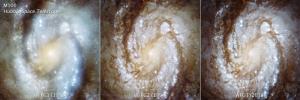
|
-
PIA22913:
-
M100 Through 3 Cameras
Full Resolution:
TIFF
(3.54 MB)
JPEG
(173 kB)
|

|
2018-12-04 |
|
Hubble Space Telescope
|
WFPC2
|
640x350x3 |
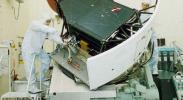
|
-
PIA22912:
-
WFPC2 Testing
Full Resolution:
TIFF
(672.5 kB)
JPEG
(46.03 kB)
|

|
2018-12-04 |
|
Hubble Space Telescope
|
WFPC2
|
1200x675x3 |
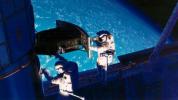
|
-
PIA22911:
-
Installing Hubble's New Camera
Full Resolution:
TIFF
(2.411 MB)
JPEG
(81.1 kB)
|

|
2016-01-06 |
|
Hubble Space Telescope
|
WFPC2
|
738x726x3 |
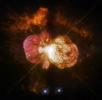
|
-
PIA20294:
-
WFPC2 Image of the Variable Star Eta Carinae
Full Resolution:
TIFF
(1.338 MB)
JPEG
(44.83 kB)
|

|
2015-02-10 |
|
Hubble Space Telescope
|
WFPC2
|
758x748x3 |
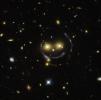
|
-
PIA18794:
-
Smile, and the Universe Smiles With You
Full Resolution:
TIFF
(1.702 MB)
JPEG
(37.58 kB)
|

|
2014-10-23 |
Mars
|
Hubble Space Telescope
|
WFPC2
|
1167x876x3 |
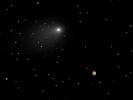
|
-
PIA17802:
-
Close Encounters: Comet Siding Spring Seen Next to Mars (Synthesized Image)
Full Resolution:
TIFF
(3.068 MB)
JPEG
(43.77 kB)
|

|
2014-09-19 |
|
Hubble Space Telescope
|
WFPC2
|
1280x686x3 |
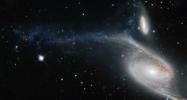
|
-
PIA17808:
-
Hubble Feathers the Peacock
Full Resolution:
TIFF
(2.635 MB)
JPEG
(101.2 kB)
|

|
2014-01-30 |
|
Hubble Space Telescope
|
WFPC2
|
1005x1005x3 |
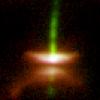
|
-
PIA17835:
-
Dark Disks Around Young Stars
Full Resolution:
TIFF
(3.031 MB)
JPEG
(56.86 kB)
|

|
2013-12-12 |
|
Herschel Space Observatory
Hubble Space Telescope
|
PACS
WFPC2
|
3864x3864x3 |
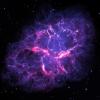
|
-
PIA17563:
-
Crab Nebula, as Seen by Herschel and Hubble
Full Resolution:
TIFF
(44.81 MB)
JPEG
(1.205 MB)
|

|
2013-09-27 |
Vesta
|
Hubble Space Telescope
|
WFPC2
|
800x525x1 |
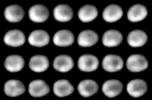
|
-
PIA17467:
-
Asteroid or Mini-Planet? Hubble Maps the Ancient Surface of Vesta
Full Resolution:
TIFF
(420.6 kB)
JPEG
(27.13 kB)
|

|
2008-08-10 |
|
Hubble Space Telescope
|
WFPC2
|
1502x1482x3 |

|
-
PIA10957:
-
Hubble Unveils Colorful and Turbulent Star-Birth Region on 100,000th Orbit Milestone
Full Resolution:
TIFF
(6.69 MB)
JPEG
(245.8 kB)
|

|
2008-07-01 |
|
Hubble Space Telescope
|
Advanced Camera for Surveys
WFPC2
|
1280x1188x3 |
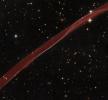
|
-
PIA10926:
-
Hubble Sees Stars and a Stripe in Celestial Fireworks
Full Resolution:
TIFF
(4.567 MB)
JPEG
(158.8 kB)
|

|
2008-05-30 |
Mars
|
Viking
|
Camera 2
|
1744x512x1 |

|
-
PIA10738:
-
Mars Surface near Viking Lander 1 Footpad
Full Resolution:
TIFF
(894.2 kB)
JPEG
(142.4 kB)
|

|
2008-04-24 |
|
Hubble Space Telescope
|
WFPC2
|
3038x1580x3 |
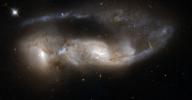
|
-
PIA10393:
-
NGC 6621/2
Full Resolution:
TIFF
(14.4 MB)
JPEG
(509.2 kB)
|

|
2008-04-24 |
|
Hubble Space Telescope
|
WFPC2
|
3481x3481x3 |
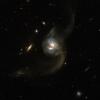
|
-
PIA10392:
-
NGC 6090 - a Pair of Spiral Galaxies
Full Resolution:
TIFF
(36.35 MB)
JPEG
(1.478 MB)
|

|
2008-04-24 |
|
Hubble Space Telescope
|
WFPC2
|
2371x2371x3 |
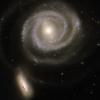
|
-
PIA10391:
-
Interacting Galaxies
Full Resolution:
TIFF
(16.88 MB)
JPEG
(634.2 kB)
|

|
2008-04-24 |
|
Hubble Space Telescope
|
WFPC2
|
3271x1828x3 |
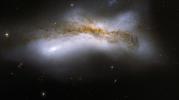
|
-
PIA10390:
-
NGC 520
Full Resolution:
TIFF
(17.94 MB)
JPEG
(736.3 kB)
|

|
2008-04-24 |
|
Hubble Space Telescope
|
WFPC2
|
1660x1660x3 |

|
-
PIA10389:
-
AM 1316-241
Full Resolution:
TIFF
(8.28 MB)
JPEG
(365.6 kB)
|

|
2008-04-24 |
|
Hubble Space Telescope
|
WFPC2
|
1669x1669x3 |
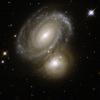
|
-
PIA10388:
-
AM 0500-620 - Spiral Arms and Bright Knots
Full Resolution:
TIFF
(8.37 MB)
JPEG
(305.4 kB)
|

|
2008-04-24 |
|
Hubble Space Telescope
|
WFPC2
|
1052x1052x3 |
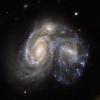
|
-
PIA10387:
-
Collision Between Two Spiral Galaxies
Full Resolution:
TIFF
(3.325 MB)
JPEG
(97.32 kB)
|

|
2008-04-24 |
|
Hubble Space Telescope
|
WFPC2
|
2289x2289x3 |
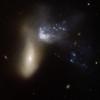
|
-
PIA10386:
-
NGC 454
Full Resolution:
TIFF
(15.74 MB)
JPEG
(638.6 kB)
|

|
2008-04-24 |
|
Hubble Space Telescope
|
WFPC2
|
1027x1027x3 |
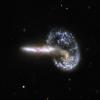
|
-
PIA10385:
-
Arp 148& - Mayall's Object
Full Resolution:
TIFF
(3.169 MB)
JPEG
(75.74 kB)
|

|
2007-02-13 |
|
Hubble Space Telescope
|
WFPC2
|
1241x1207x3 |

|
-
PIA09194:
-
The Colorful Demise of a Sun-like Star
Full Resolution:
TIFF
(4.499 MB)
JPEG
(153.6 kB)
|

|
2005-12-01 |
Crab Nebula
|
Hubble Space Telescope
|
WFPC2
|
3864x3864x3 |
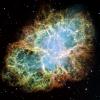
|
-
PIA03606:
-
Most Detailed Image of the Crab Nebula
Full Resolution:
TIFF
(44.79 MB)
JPEG
(1.926 MB)
|

|
2005-11-02 |
|
Hubble Space Telescope
|
WFPC2
|
1518x1497x3 |
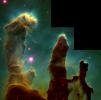
|
-
PIA12108:
-
Embryonic Stars Emerge from Interstellar "Eggs"
Full Resolution:
TIFF
(6.83 MB)
JPEG
(195 kB)
|

|
2004-05-26 |
Saturn
|
Hubble Space Telescope
|
WFPC2
|
2814x1458x3 |
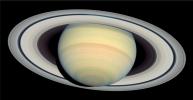
|
-
PIA05982:
-
Saturn from Far and Near (Hubble Space Telescope)
Full Resolution:
TIFF
(6.194 MB)
JPEG
(198 kB)
|

|
2004-05-26 |
Saturn
|
Cassini-Huygens
Hubble Space Telescope
|
ISS - Narrow Angle
Wide Field Planetary Camera 2
|
540x760x3 |

|
-
PIA05981:
-
Saturn from Far and Near
Full Resolution:
TIFF
(720.3 kB)
JPEG
(32.05 kB)
|

|
2004-02-03 |
|
Hubble Space Telescope
|
WFPC2
|
1065x771x3 |

|
-
PIA05202:
-
Supernova Blast Bonanza in Nearby Galaxy
Full Resolution:
TIFF
(2.467 MB)
JPEG
(177.7 kB)
|

|
2003-07-03 |
|
Hubble Space Telescope
|
WFPC2
|
2603x2783x3 |

|
-
PIA04609:
-
Celestial Fireworks
Full Resolution:
TIFF
(13.8 MB)
JPEG
(871.3 kB)
|

|
2003-05-27 |
|
Hubble Space Telescope
|
WFPC2
|
612x792x3 |

|
-
PIA04533:
-
The Red Rectangle
Full Resolution:
TIFF
(870.7 kB)
JPEG
(38.33 kB)
|

|
2003-05-21 |
|
Hubble Space Telescope
|
WFPC2
|
869x444x3 |

|
-
PIA04277:
-
Hubble's View of a Dying Star
Full Resolution:
TIFF
(635.3 kB)
JPEG
(42.81 kB)
|

|
2003-02-11 |
Dumbbell Nebula
|
Hubble Space Telescope
|
WFPC2
|
1262x750x3 |
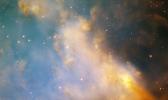
|
-
PIA04249:
-
Close-up of M27, the Dumbbell Nebula
Full Resolution:
TIFF
(2.843 MB)
JPEG
(75.6 kB)
|

|
2002-10-08 |
Jupiter
|
Galileo
Hubble Space Telescope
IRTF
|
WFPC2
|
650x300x3 |

|
-
PIA03864:
-
Cold Hole Over Jupiter's Pole
Full Resolution:
TIFF
(176.2 kB)
JPEG
(15.88 kB)
|

|
2001-10-13 |
Mars
|
Hubble Space Telescope
|
WFPC2
|
2826x1677x3 |
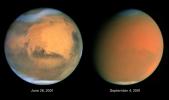
|
-
PIA03173:
-
Scientists Track "Perfect Storm" on Mars
Full Resolution:
TIFF
(7.452 MB)
JPEG
(168.7 kB)
|

|
2001-07-21 |
Saturn
|
Hubble Space Telescope
|
WFPC2
|
3000x1500x3 |
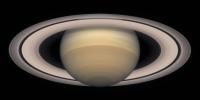
|
-
PIA03162:
-
A Change of Seasons on Saturn - October, 2000
Full Resolution:
TIFF
(5.81 MB)
JPEG
(156.4 kB)
|

|
2001-07-21 |
Saturn
|
Hubble Space Telescope
|
WFPC2
|
3000x1500x3 |

|
-
PIA03161:
-
A Change of Seasons on Saturn - October, 1999
Full Resolution:
TIFF
(13.51 MB)
JPEG
(150.5 kB)
|

|
2001-07-21 |
Saturn
|
Hubble Space Telescope
|
WFPC2
|
3000x1500x3 |
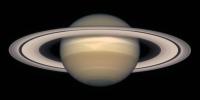
|
-
PIA03160:
-
A Change of Seasons on Saturn - October, 1998
Full Resolution:
TIFF
(4.54 MB)
JPEG
(140.8 kB)
|

|
2001-07-21 |
Saturn
|
Hubble Space Telescope
|
WFPC2
|
1152x576x3 |
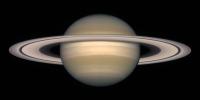
|
-
PIA03159:
-
A Change of Seasons on Saturn - October, 1997
Full Resolution:
TIFF
(695.1 kB)
JPEG
(27.48 kB)
|

|
2001-07-21 |
Saturn
|
Hubble Space Telescope
|
WFPC2
|
3000x1500x3 |
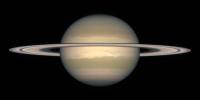
|
-
PIA03158:
-
A Change of Seasons on Saturn - October, 1996
Full Resolution:
TIFF
(3.053 MB)
JPEG
(120 kB)
|

|
2001-07-21 |
Saturn
|
Hubble Space Telescope
|
WFPC2
|
3000x2270x3 |

|
-
PIA03156:
-
A Change of Seasons on Saturn
Full Resolution:
TIFF
(4.312 MB)
JPEG
(220 kB)
|

|
2001-07-21 |
Jupiter
|
Hubble Space Telescope
|
WFPC2
|
752x417x3 |
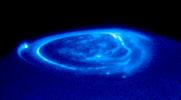
|
-
PIA03155:
-
Satellite Footprints Seen in Jupiter Aurora
Full Resolution:
TIFF
(202.4 kB)
JPEG
(34.06 kB)
|

|
2001-07-21 |
Mars
|
Hubble Space Telescope
|
WFPC2
|
500x500x3 |
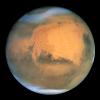
|
-
PIA03154:
-
Hubble Captures Best View of Mars Ever Obtained from Earth
Full Resolution:
TIFF
(463.3 kB)
JPEG
(17.85 kB)
|

|
2000-10-23 |
Jupiter
|
Hubble Space Telescope
|
WFPC2
|
693x485x1 |

|
-
PIA02823:
-
Oval Storms Merging on Jupiter
Full Resolution:
TIFF
(223.6 kB)
JPEG
(43.14 kB)
|

|
2000-08-24 |
Uranus
|
Hubble Space Telescope
|
WFPC2
|
2400x2433x3 |

|
-
PIA02963:
-
Hubble Finds Many Bright Clouds on Uranus
Full Resolution:
TIFF
(3.277 MB)
JPEG
(170.8 kB)
|

|
2000-02-03 |
|
Hubble Space Telescope
|
WFPC2
|
2292x1480x3 |

|
-
PIA14444:
-
Light and Shadow in the Carina Nebula
Full Resolution:
TIFF
(10.18 MB)
JPEG
(419.5 kB)
|

|
1999-12-30 |
Edge-on Galaxy ESO 510 G13
|
Hubble Space Telescope
|
WFPC2
|
1435x732x3 |
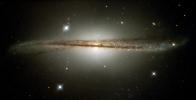
|
-
PIA04213:
-
Edge-on Galaxy
Full Resolution:
TIFF
(2.843 MB)
JPEG
(100.8 kB)
|

|
1999-12-15 |
Galaxy NGC 4013
|
Hubble Space Telescope
|
WFPC2
|
1041x1018x3 |
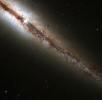
|
-
PIA04217:
-
Galaxy NGC 4013
Full Resolution:
TIFF
(2.811 MB)
JPEG
(74.83 kB)
|

|
1999-12-10 |
Hubble -V
|
Hubble Space Telescope
|
WFPC2
|
640x800x3 |

|
-
PIA04222:
-
Hubble-V
Full Resolution:
TIFF
(1.065 MB)
JPEG
(77.99 kB)
|

|
1999-12-10 |
Ant nebula
|
Hubble Space Telescope
|
WFPC2
|
1072x708x3 |
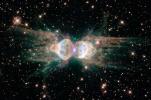
|
-
PIA04216:
-
Ant Nebula
Full Resolution:
TIFF
(2.008 MB)
JPEG
(143.4 kB)
|

|
1999-12-07 |
Galaxy NGC 3310
|
Hubble Space Telescope
|
WFPC2
|
849x933x3 |

|
-
PIA04229:
-
Starburst Galaxy NGC 3310
Full Resolution:
TIFF
(1.858 MB)
JPEG
(102.3 kB)
|

|
1999-12-04 |
Whirlpool Galaxy
|
Hubble Space Telescope
|
WFPC2
|
648x809x3 |

|
-
PIA04230:
-
Whirlpool Galaxy
Full Resolution:
TIFF
(1.575 MB)
JPEG
(84.45 kB)
|

|
1999-12-03 |
Ghost Head Nebula
|
Hubble Space Telescope
|
WFPC2
|
674x674x3 |

|
-
PIA04226:
-
Ghost Head Nebula
Full Resolution:
TIFF
(1.364 MB)
JPEG
(49.94 kB)
|

|
1999-12-03 |
N44C nebula
|
Hubble Space Telescope
|
WFPC2
|
1460x1502x3 |

|
-
PIA04225:
-
N44C Nebula
Full Resolution:
TIFF
(6.034 MB)
JPEG
(275.2 kB)
|

|
1999-12-03 |
Galaxy NGC 1850
|
Hubble Space Telescope
|
WFPC2
|
758x580x3 |
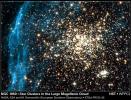
|
-
PIA04221:
-
Galaxy NGC 1850
Full Resolution:
TIFF
(1.321 MB)
JPEG
(140.6 kB)
|

|
1999-12-02 |
Rotten Egg Nebula
|
Hubble Space Telescope
|
WFPC2
|
843x794x3 |

|
-
PIA04228:
-
Rotten Egg Nebula
Full Resolution:
TIFF
(818.3 kB)
JPEG
(56.88 kB)
|

|
1999-12-02 |
Orion Nebula
|
Hubble Space Telescope
|
WFPC2
|
1074x895x3 |
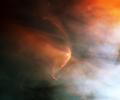
|
-
PIA04227:
-
Orion Nebula and Bow Shock
Full Resolution:
TIFF
(2.805 MB)
JPEG
(61.4 kB)
|

|
1999-12-02 |
Thackeray's Globules
|
Hubble Space Telescope
|
WFPC2
|
1480x1498x3 |

|
-
PIA04223:
-
Thackeray's Globules
Full Resolution:
TIFF
(5.8 MB)
JPEG
(177.7 kB)
|

|
1999-12-02 |
M82 Galaxy
|
Hubble Space Telescope
|
WFPC2
|
1487x1522x3 |

|
-
PIA04218:
-
Galaxy M82
Full Resolution:
TIFF
(5.39 MB)
JPEG
(187.4 kB)
|

|
1999-12-02 |
Galaxy NGC 3079
|
Hubble Space Telescope
|
WFPC2
|
2329x1845x3 |
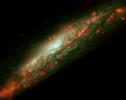
|
-
PIA04209:
-
Galaxy NGC 3079
Full Resolution:
TIFF
(5.519 MB)
JPEG
(351.2 kB)
|

|
1999-12-02 |
Galaxy NGC 3079
|
Hubble Space Telescope
|
WFPC2
|
434x434x3 |
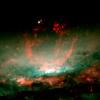
|
-
PIA04208:
-
Galaxy NGC 3079
Full Resolution:
TIFF
(305.3 kB)
JPEG
(22.15 kB)
|

|
1999-12-02 |
Stephan's Quintet,NGC 7319, NGC 7318B, NGC 7318A
|
Hubble Space Telescope
|
WFPC2
|
2400x3000x3 |

|
-
PIA04201:
-
Stephan's Quintet
Full Resolution:
TIFF
(12.15 MB)
JPEG
(521 kB)
|

|
1999-12-01 |
Globular cluster M4
|
Hubble Space Telescope
|
WFPC2
|
1100x1237x3 |

|
-
PIA04231:
-
White Dwarf Stars
Full Resolution:
TIFF
(3.34 MB)
JPEG
(279.1 kB)
|

|
1999-12-01 |
Galaxy NGC 4622
|
Hubble Space Telescope
|
WFPC2
|
853x970x3 |

|
-
PIA04224:
-
Backwards Spiral Galaxy
Full Resolution:
TIFF
(2.485 MB)
JPEG
(97.62 kB)
|

|
1999-12-01 |
Galaxy NGC 1512
|
Hubble Space Telescope
|
WFPC2
Faint Object Camera
Near Infrared Camera
Multi-Object Spectrometer
|
600x650x3 |

|
-
PIA04219:
-
Galaxy NGC 1512
Full Resolution:
TIFF
(972.2 kB)
JPEG
(50.1 kB)
|

|
1999-12-01 |
Horsehead Nebula
|
Hubble Space Telescope
|
WFPC2
|
853x620x3 |

|
-
PIA04215:
-
Horsehead Nebula
Full Resolution:
TIFF
(1.405 MB)
JPEG
(48.75 kB)
|

|
1999-12-01 |
mysterious object
|
Hubble Space Telescope
|
WFPC2
|
3000x2400x3 |
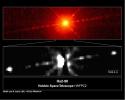
|
-
PIA04214:
-
Mysterious object He2-90
Full Resolution:
TIFF
(6.584 MB)
JPEG
(488.7 kB)
|

|
1999-12-01 |
Globular cluster M22
|
Hubble Space Telescope
|
WFPC2
|
514x600x3 |

|
-
PIA04202:
-
Globular Cluster M22
Full Resolution:
TIFF
(926.4 kB)
JPEG
(94.12 kB)
|

|
1999-12-01 |
Doradus Nebula
|
Hubble Space Telescope
|
WFPC2
|
2508x1790x3 |

|
-
PIA04200:
-
Doradus Nebula
Full Resolution:
TIFF
(12.24 MB)
JPEG
(608.9 kB)
|

|
1999-08-24 |
Jupiter
|
Hubble Space Telescope
|
WFPC2
|
2401x2870x3 |

|
-
PIA01593:
-
Hubble Views Ancient Storm in the Atmosphere of Jupiter - Montage
Full Resolution:
TIFF
(14.35 MB)
JPEG
(423.5 kB)
|

|
1999-08-24 |
Jupiter
|
Hubble Space Telescope
|
WFPC2
|
321x321x3 |
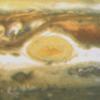
|
-
PIA02402:
-
Hubble Views Ancient Storm in the Atmosphere of Jupiter - June, 1999
Full Resolution:
TIFF
(258.3 kB)
JPEG
(11.79 kB)
|

|
1999-08-24 |
Jupiter
|
Hubble Space Telescope
|
WFPC2
|
321x321x3 |
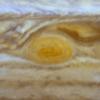
|
-
PIA02401:
-
Hubble Views Ancient Storm in the Atmosphere of Jupiter - April, 1997
Full Resolution:
TIFF
(217.3 kB)
JPEG
(10.36 kB)
|

|
1999-08-24 |
Jupiter
|
Hubble Space Telescope
|
WFPC2
|
321x321x3 |

|
-
PIA02400:
-
Hubble Views Ancient Storm in the Atmosphere of Jupiter - October, 1996
Full Resolution:
TIFF
(219.7 kB)
JPEG
(9.823 kB)
|

|
1999-08-24 |
Jupiter
|
Hubble Space Telescope
|
WFPC2
|
321x321x3 |
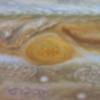
|
-
PIA01599:
-
Hubble Views Ancient Storm in the Atmosphere of Jupiter - October, 1995
Full Resolution:
TIFF
(245 kB)
JPEG
(9.032 kB)
|

|
1999-08-24 |
Jupiter
|
Hubble Space Telescope
|
WFPC2
|
321x321x3 |
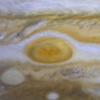
|
-
PIA01598:
-
Hubble Views Ancient Storm in the Atmosphere of Jupiter - February, 1995
Full Resolution:
TIFF
(218.9 kB)
JPEG
(9.833 kB)
|

|
1999-08-24 |
Jupiter
|
Hubble Space Telescope
|
WFPC2
|
321x321x3 |
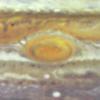
|
-
PIA01597:
-
Hubble Views Ancient Storm in the Atmosphere of Jupiter - August, 1994
Full Resolution:
TIFF
(285.2 kB)
JPEG
(10.9 kB)
|

|
1999-08-24 |
Jupiter
|
Hubble Space Telescope
|
WFPC2
|
321x321x3 |
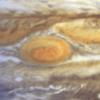
|
-
PIA01596:
-
Hubble Views Ancient Storm in the Atmosphere of Jupiter - July, 1994
Full Resolution:
TIFF
(301.3 kB)
JPEG
(12.4 kB)
|

|
1999-08-24 |
Jupiter
|
Hubble Space Telescope
|
WFPC2
|
321x321x3 |
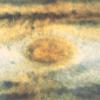
|
-
PIA01595:
-
Hubble Views Ancient Storm in the Atmosphere of Jupiter - May, 1992
Full Resolution:
TIFF
(306.5 kB)
JPEG
(13.83 kB)
|

|
1999-08-24 |
Jupiter
|
Hubble Space Telescope
|
WFPC2
|
718x716x3 |
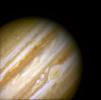
|
-
PIA01594:
-
Hubble Views Ancient Storm in the Atmosphere of Jupiter - Full Disk
Full Resolution:
TIFF
(1.127 MB)
JPEG
(30.32 kB)
|

|
1999-08-23 |
Mars
|
Hubble Space Telescope
|
WFPC2
|
3001x2070x3 |

|
-
PIA01587:
-
A Closer Hubble Encounter With Mars - 4 Views
Full Resolution:
TIFF
(7.258 MB)
JPEG
(270.4 kB)
|

|
1999-08-23 |
Mars
|
Hubble Space Telescope
|
WFPC2
|
800x800x3 |
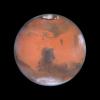
|
-
PIA01592:
-
A Closer Hubble Encounter With Mars - Syrtis Major
Full Resolution:
TIFF
(767.3 kB)
JPEG
(28.49 kB)
|

|
1999-08-23 |
Mars
|
Hubble Space Telescope
|
WFPC2
|
800x800x3 |
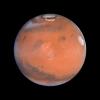
|
-
PIA01591:
-
A Closer Hubble Encounter With Mars - Elysium
Full Resolution:
TIFF
(743.6 kB)
JPEG
(26.86 kB)
|

|
1999-08-23 |
Mars
|
Hubble Space Telescope
|
WFPC2
|
800x800x3 |
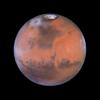
|
-
PIA01589:
-
A Closer Hubble Encounter With Mars - Pathfinder Landing Site
Full Resolution:
TIFF
(833.5 kB)
JPEG
(30.84 kB)
|

|
1999-08-23 |
Mars
|
Hubble Space Telescope
|
WFPC2
|
900x450x3 |
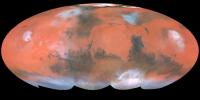
|
-
PIA01588:
-
A Closer Hubble Encounter With Mars - Global View
Full Resolution:
TIFF
(894 kB)
JPEG
(33.76 kB)
|

|
1999-08-23 |
Mars
|
Hubble Space Telescope
|
WFPC2
|
800x800x3 |
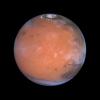
|
-
PIA01590:
-
A Closer Hubble Encounter With Mars - Tharsis
Full Resolution:
TIFF
(783.2 kB)
JPEG
(26.36 kB)
|

|
1999-05-21 |
Uranus
|
Hubble Space Telescope
|
WFPC2
|
1074x737x3 |
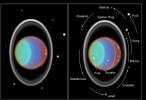
|
-
PIA01278:
-
Hubble Tracks Clouds on Uranus
Full Resolution:
TIFF
(777.6 kB)
JPEG
(60.06 kB)
|

|
1999-05-21 |
Neptune
|
Hubble Space Telescope
|
WFPC2
|
720x730x3 |

|
-
PIA01542:
-
Neptune's Stormy Disposition
Full Resolution:
TIFF
(610.8 kB)
JPEG
(37.55 kB)
|

|
1999-05-21 |
Mars
|
Hubble Space Telescope
|
WFPC2
|
3000x1850x3 |

|
-
PIA01543:
-
Martian Colors Provide Clues About Martian Water
Full Resolution:
TIFF
(5.11 MB)
JPEG
(230.4 kB)
|

|
1999-05-21 |
Mars
|
Hubble Space Telescope
|
WFPC2
|
2827x1723x3 |

|
-
PIA01545:
-
Hubble Views Colossal Polar Cyclone on Mars
Full Resolution:
TIFF
(5.289 MB)
JPEG
(246.7 kB)
|

|
1999-05-21 |
Moon
|
Hubble Space Telescope
|
WFPC2
|
1125x754x1 |
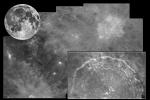
|
-
PIA01541:
-
Crater Copernicus
Full Resolution:
TIFF
(664 kB)
JPEG
(100.7 kB)
|

|
1999-05-18 |
Venus
|
Hubble Space Telescope
|
WFPC2
|
170x248x3 |

|
-
PIA01544:
-
Venus Cloud Tops Viewed by Hubble
Full Resolution:
TIFF
(48.41 kB)
JPEG
(3.494 kB)
|

|
1999-01-06 |
|
Hubble Space Telescope
|
WFPC2
|
1215x1241x3 |

|
-
PIA14443:
-
Looking Down a Barrel of Gas at a Doomed Star
Full Resolution:
TIFF
(4.525 MB)
JPEG
(65.37 kB)
|

|
1998-09-26 |
Titan
|
Hubble Space Telescope
|
WFPC2
|
600x750x3 |

|
-
PIA01465:
-
Hubble Observes Surface of Titan
Full Resolution:
TIFF
(564.6 kB)
JPEG
(37.66 kB)
|

|
1998-09-26 |
Saturn
|
Hubble Space Telescope
|
WFPC2
|
782x540x3 |
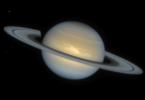
|
-
PIA01464:
-
Hubble Observes a New Saturn Storm
Full Resolution:
TIFF
(312.8 kB)
JPEG
(16.72 kB)
|

|
1998-08-03 |
Hale-Bopp
|
Hubble Space Telescope
|
WFPC2
|
800x465x3 |

|
-
PIA01291:
-
Hubble Sees Material Ejected From Comet Hale-Bopp
Full Resolution:
TIFF
(568.3 kB)
JPEG
(47.2 kB)
|

|
1998-08-03 |
Hyakutake
|
Hubble Space Telescope
|
WFPC2
|
1152x893x3 |

|
-
PIA01290:
-
Hubble Probes Inner Region of Comet Hyakutake
Full Resolution:
TIFF
(1.269 MB)
JPEG
(77.61 kB)
|

|
1998-08-02 |
Hale-Bopp
|
Hubble Space Telescope
|
WFPC2
|
1152x825x3 |
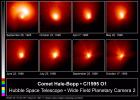
|
-
PIA01289:
-
Hubble Images of Comet Hale-Bopp
Full Resolution:
TIFF
(1.289 MB)
JPEG
(124.7 kB)
|

|
1998-08-02 |
Hyakutake
|
Hubble Space Telescope
|
WFPC2
|
991x486x3 |
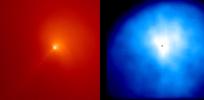
|
-
PIA01288:
-
Comet Hyakutake C/1996 B2
Full Resolution:
TIFF
(1.005 MB)
JPEG
(29.38 kB)
|

|
1998-08-02 |
Neptune
|
Hubble Space Telescope
|
WFPC2
|
510x259x3 |
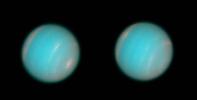
|
-
PIA01287:
-
Hubble Space Telescope Wide Field Planetary Camera 2 Observations of Neptune
Full Resolution:
TIFF
(103 kB)
JPEG
(7.186 kB)
|

|
1998-08-02 |
Neptune
|
Hubble Space Telescope
|
WFPC2
|
800x450x1 |
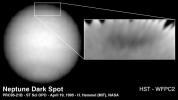
|
-
PIA01286:
-
Hubble Finds New Dark Spot on Neptune
Full Resolution:
TIFF
(140 kB)
JPEG
(26.2 kB)
|

|
1998-08-02 |
Neptune
|
Hubble Space Telescope
|
WFPC2
|
800x500x3 |
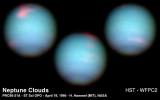
|
-
PIA01285:
-
Hubble's View of Neptune
Full Resolution:
TIFF
(625.7 kB)
JPEG
(25.5 kB)
|

 Planetary Data System
Planetary Data System



















































































































